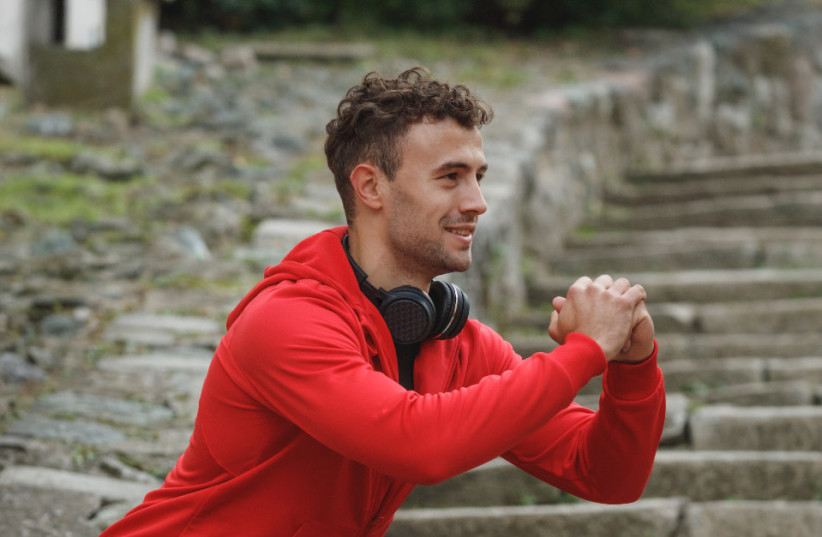What's the best way to stretch when you're working out?

What's the difference between stretching before working out and stretching when you finish?
Most people tend to forego stretching, whether before an intense workout or even as a way to start the morning, which is a shame. Stretching has advantages such as maintaining range of motion, achieving a more precise technique in training and releasing muscle stiffness. Stretching also reduces the risk of possible injuries.
Stretching can be divided into two main types: Static stretching, where you stretch the muscle to the point where you feel slight discomfort and you hold the stretch for twenty to thirty seconds, and dynamic stretching, where you lengthen and stretch the muscles while you move.
The main difference between static and dynamic stretching is the stretching of an isolated muscle group compared to the stretching of multiple muscle groups during activities like running and jumping.
Dynamic stretching helps to improve the nerve-muscle connection and the coordination of the specific muscles moving, which improves performance.
Stretching before training increases the chance of injury. Myth or truth?
Recent studies show that static stretching before the start of training doesn't help prevent injuries and even causes a reduction in maximum strength and the flow of adrenaline during sports activities.
What's the best way to stretch?
Start with a short general warm-up for between 5-10 minutes. The warm-up includes dynamic stretching and exercises identical to those that will be performed in the planned activity but at a reduced intensity.
Running and stretching in place help raise the temperature of the muscles and joints and increase blood flow to the muscles. It's important to adapt the type of stretching to the activity you'll do.
For example, before soccer practice, swing your legs to mimic the different ways to kick. To prepare for runs, do squats and lunges that will flex and warm the knee joints, ankles and tendons.
Stretching after training
It's a common belief that stretching after training is mandatory, but this isn't true for every exerciser and it depends on the level of flexibility and the type of training.
For example, in a gym, when doing partial range of motion exercises and using strength machines, one should stretch at the end of the workout. When you stretch, pay attention to the less flexible muscle groups or to the muscles that worked more during training.
Not only when you finish training: A workout dedicated to stretching
You might be surprised to hear that it's highly recommended to dedicate time each week to training that's only stretching: Two-three times a week, to be precise, for 15-30 minutes. This allows for quality training.
Of course, some people don't have time to do this and only stretch after they work out. As a rule, it's better to wait a few minutes from the moment the activity ends for your body temperature and muscles to drop so that all areas of the muscle fibers can be stretched and not flex only the elastic areas of the muscle fibers, which are more flexible after physical activity.
How to manage a decrease in flexibility
As we age our flexibility decreases. Although some people aren't flexible from a young age, in general, young people in their twenties and thirties are quite flexible. Yet in their forties and fifties, people notice they're less flexible which may cause injuries when doing sports and in general it might be harder for someone to bend down to pick up objects or stretch for something on a high shelf.
So, even if you don't do regular physical activity, it's important to flex your muscles and joints and set a time to do stretches or do things casually like getting up from a chair and stretching the hamstrings by bending forward from a standing position or leaning against the wall with both hands and stretching the chest and shoulders.
Stretching increases physical awareness and readiness for performing physical activities, so we can avoid unnecessary injuries that may prevent us from being active for an extended period of time.
Jerusalem Post Store
`; document.getElementById("linkPremium").innerHTML = cont; var divWithLink = document.getElementById("premium-link"); if (divWithLink !== null && divWithLink !== 'undefined') { divWithLink.style.border = "solid 1px #cb0f3e"; divWithLink.style.textAlign = "center"; divWithLink.style.marginBottom = "15px"; divWithLink.style.marginTop = "15px"; divWithLink.style.width = "100%"; divWithLink.style.backgroundColor = "#122952"; divWithLink.style.color = "#ffffff"; divWithLink.style.lineHeight = "1.5"; } } (function (v, i) { });

